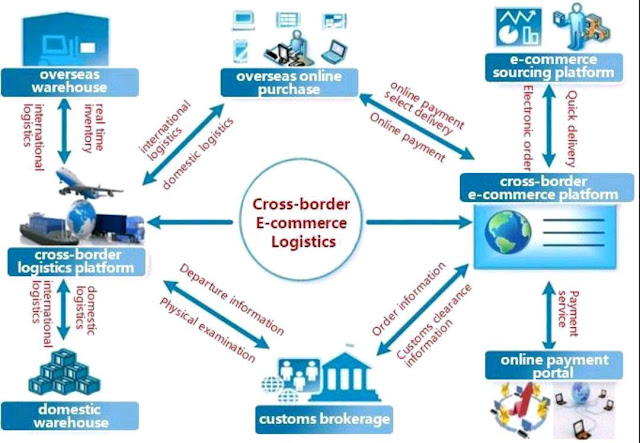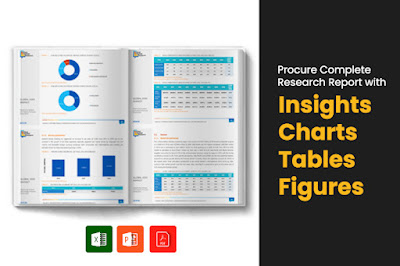⏩ Download PDF Sample of Research Report Overview ⏪
Cross- border transportation refers to the flow of freights across an international border. Cross-border e-commerce refers to online trading between businesses such as retailers or brands and a consumer (B2C), or between two businesses or wholesalers (B2B), or between two individuals (C2C). Cross-border e-commerce logistics is usually characterized as online shopping and transactions over the internet, and deliver/receive goods through cross-border logistics. The cross-border e-commerce has the potential to decrease trade barriers while enhancing trade growth. This is most common in developed regions because of the superior infrastructure and regulations of e-commerce. Moreover, unlike B2C e-commerce, cross-border e-commerce requires the integrating of the activities along with the logistics value chain, with the transaction occurring from overseas suppliers through the domestic retailers to consumers. It is mainly a business-to-business-to-consumer (B2B2C) process. However, customs clearance is an essential process in freight transportation across borders.
COVID-19 Impact Analysis
- COVID-19
originated in Wuhan (China) in December 2019 and since then it has spread
rapidly across the globe. The U.S., India, Brazil, Russia, France, the UK,
Turkey, Italy, and Spain are some of the worst affected countries in terms
of confirmed cases and reported deaths. The COVID-19 has been affecting
economies and industries in various countries due to lockdowns, travel
bans, and business shutdowns. The outbreak of COVID-19 has resulted in
flight cancellations, travel bans, and quarantines, which made significant
slowdown of the cross-border E-commerce logistics market activities across
the globe. Due to the halt on national and international borders, the
movement of freight carriers has ceased, and the cross-border E-commerce
logistics industry has reported a decline in business. The most common
reasons for the decline in growth are movement restrictions, border
controls and closures, and health checks., The business of the
cross-border E-commerce logistics market has declined, due to the closure
of national and international boundaries
Top Impacting Factors
Growth in penetration of mobile computing devices, online shopping from
merchants located in different locations, and increase in number of different
e-commerce vendors that are developing mobile compatible applications drive the
growth of the market.
High cost of air freight & logistics hinder the growth of the cross-border
e-commerce logistics market.
Adoption of blockchain technology in the logistics market, and increase in
population & urbanization act an opportunity for the market investments.
The Cross-Border E-commerce Logistics Market Trends are
as Follows:
Increase in Population & Urbanization
- The
presence of a high population along with the developing economies, rising
disposable income, and increasingly middle-class population altogether are
responsible for the growth of the cross-border E-commerce logistics
market. Rapid urbanization is expected to propel the consumer goods demand
and this growing demand offers an opportunity for businesses to expand
their activities in other countries through online channels thereby
encouraging the cross-border trade of goods. Furthermore, an increase in
the incomes of the people shows a positive effect on spending related to
consumer goods, which leads to the increase in the flow of goods and
services across the region. Thus, driving the growth of the cross-border
E-commerce logistics market.
Adoption of Blockchain Technology in the Logistics Market
- The
use of blockchain technology in the logistics market is anticipated to
promote the market growth. This technology is used to record digital
transactions such as long miles, hours drove, improving security,
accuracy, and versatility of data. This helps in prevention of fraudulent
freight management operations and manages the elements of freight
contracts, and parts management. These benefits of this blockchain
technology have prompted many logistics enterprises to use this technology
in coming years.
Key Benefits of the Report:
- This
study presents the analytical depiction of the global cross-border
E-commerce logistics market along with the current trends and future
estimations to determine the imminent investment pockets.
- The
report presents information related to key drivers, restraints, and
opportunities along with challenges of the global cross-border E-commerce
logistics market.
- The
current market is quantitatively analyzed to highlight the growth
scenario of the global cross-border E-commerce logistics market.
- The
report provides a detailed global cross-border E-commerce logistics market
analysis based on competitive intensity and the competition that will take
shape in coming years.
Questions Answered in the Global Cross-Border E-commerce
Logistics Market Research Report:
- Who
are the leading market players active in the global cross-border
E-commerce logistics market?
- What
would be the detailed impact of COVID-19 on the market?
- What
are the current trends that would influence the market in the next few
years?
- What
are the driving factors, restraints, and opportunities in the global
cross-border E-commerce logistics market?
- What
are the future projections that would help in taking further strategic
steps?
Cross-border E-commerce Logistics Market Report Highlights
|
Aspects |
Details |
|
By Service Type |
|
|
By End Use |
|
|
By Delivery Type |
|
|
By Region |
|
|
Key Market Players |
Moller – Maersk AS, Aramex International LLC, C.H.
Robinson Worldwide, Inc, CEVA Logistics AG, Deutsche Post AG, DSV Panalpina
AS, FedEx Corp, Kuehne + Nagel International AG, United Parcel Service of
America Inc., XPO Logistics Inc. |








.jpg)

0 Comments